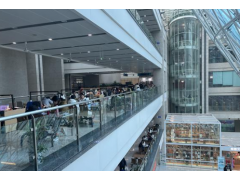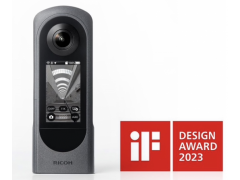Digital printing of packaging has come a long way since its early days when it was primarily used to print codes and best-before dates. Today, digital printers are a major player in label and narrow web printing and are gaining popularity in corrugated, folding carton and even flexible packaging.
Gary Barnes, director of sales and marketing for Fujifilm’s ink solutions group, noted that “inkjet is growing in several areas within packaging. It is established and continues to grow in label printing, is maturing in corrugated, folding carton is gaining momentum, and flexible packaging is now viable. The key technologies are UV for labels, corrugated and some folding cartons, and water-based pigments for corrugated, flexible packaging and folding cartons.”
“Epson is watching the growth in inkjet printing, particularly in the label industry,” said Mike Pruitt, senior product manager at Epson America. “Digital printing has become mainstream, and we often see analog and digital printing technologies combined. This hybrid approach leverages the strengths of both methods to enable greater flexibility, efficiency and customization in packaging solutions.”
Simon Daplyn, product and marketing manager at Sun Chemical, said Sun Chemical has seen growth in different areas of digitally printed packaging in mature markets such as labels, as well as other areas of corrugated, metal decoration, folding carton, flexible film and direct to form printing that have adopted digital printing technology.
“Inkjet is well established in the label market, with UV LED inks and systems offering superior quality,” noted Daplyn. “Along with innovations in water-based inks, the integration of UV technology and other new aqueous solutions continues to expand, helping to drive adoption.”
Melissa Bosnyak, program manager for sustainable packaging solutions at Videojet Technologies, noted that inkjet printing is evolving as it caters to emerging packaging types, materials and trends, with the need for sustainability being a key driver.
“For example, the push for recyclability has spurred the use of monomaterials in packaging,” Bosnyak noted. “To keep pace with this shift, Videojet recently launched a patent-pending inkjet ink specifically formulated to provide excellent scratch and rub resistance, especially on widely used monomaterial packaging, including HDPE, LDPE and BOPP. We are also seeing growth in inkjet due to increased demand for more dynamic printing on production lines. Targeted marketing campaigns are an important driver of this trend.”
“From our perspective as a pioneer and global leader in thermal inkjet (TIJ), we see continued growth in the market and increasing adoption of inkjet for packaging coding, particularly TIJ,” said Olivier Bastien, business unit manager at HP.
“Some markets, such as labels, have been adopting digital inkjet technology for some time and continue to increase digital content,” said Paul Edwards, vice president of digital at INX International.
Growth Market
“Digital printing has had the greatest success in printing labels, where it accounts for approximately one-quarter of the market. Currently, this is primarily done with UV and UV LED processes, which offer outstanding print quality and performance,” said Daplyn. “Digital printing meets and often exceeds market expectations in terms of speed, quality, print uptime and functionality, benefiting from increased design capabilities, cost-effectiveness in small batches and color performance.”
“Digital printing has long been used on the production line for product identification and packaging coding,” Bosnyak said. “Basic and promotional variable content, including dates, production information, prices, barcodes and ingredient/nutritional information, can be printed using inkjet and other digital technologies at various points throughout the packaging process.”
Bastien observed that digital printing is growing rapidly in a variety of printing applications, especially in areas where variable data is required and customization and personalization are adopted. Prime examples include printing variable information directly on adhesive labels or printing text, logos and other elements directly on corrugated boxes. In addition, digital printing is making inroads in flexible packaging and overall packaging by allowing the direct printing of basic information such as date codes, bar codes and QR codes.”
“I believe that the label market will continue to grow in application over time,” Edwards said. “Narrow web penetration will increase as single-pass printers and related ink technologies continue to improve. Corrugated growth will continue, with the benefits being most significant for products with finely decorated finishes. metallic decoration penetration is relatively new, but has the opportunity to make significant inroads as technology addresses application issues to a higher degree through new printers and ink options.”
The biggest advances are in the labeling space, Barnes said. “Narrow-width, compact-format machines offer good ROI and product robustness,” he added. Label applications are often well suited to digital technology with low run lengths and version requirements. Flexible packaging will thrive, and digital packaging is a good fit for this market. Some companies will make big investments in corrugated, which is a high-volume market.”
Future growth areas
Where is the next big market for digital printing? Fujifilm’s Barnes points out that it is flexible packaging. Because the technology is ready for both hardware and water-based ink chemistry, it can be produced on film substrates at acceptable production speeds and quality.
Pruitt also believes that it is flexible packaging that is becoming increasingly popular among consumers because of its convenience and portability. Flexible packaging uses less material, fits in with the sustainability trend, and allows a high level of customization and personalization, helping brands differentiate their products.
Bastien believes the next big growth in digital packaging printing will be driven by the GS1 global initiative to use complex 2D codes and data matrices on all consumer product packaging by 2027, creating a huge growth opportunity for digital packaging printing.
“There is a growing demand for customized and interactive printed content,” said Bosnyak. “QR codes and personalized messages are becoming a powerful way to capture customer interest, drive engagement, and protect brands, products, and consumer bases.”
Bosnyak added: “The flexible packaging market is increasing as manufacturers set new sustainable packaging goals. Flexible packaging uses less plastic than rigid packaging and has a lighter shipping footprint than other packaging materials, helping users achieve sustainability goals without compromising performance. Manufacturers are also utilizing more recyclable flexible films to promote packaging circularity.”
“I think it will be in the two-piece metal trim market,” Edwards said. “It’s growing rapidly with the implementation of digital short-term benefits and the push from microbreweries, and then it will probably be applied to the wider metal trim space.”
Daplyn noted that it is likely that we will see digital printing gain widespread adoption in every major area of packaging, with the corrugated and flexible packaging markets showing the greatest potential. These markets have strong appeal for water-based inks, which can better manage compliance and sustainability goals. The success of digital printing in these applications will depend in part on collaboration between ink and hardware suppliers to deliver water-based technologies that meet the speed and drying requirements of a range of materials while maintaining regulatory compliance in key areas such as food packaging. The potential for growth in digital printing in the corrugated market increases with trends such as carton advertising.”




